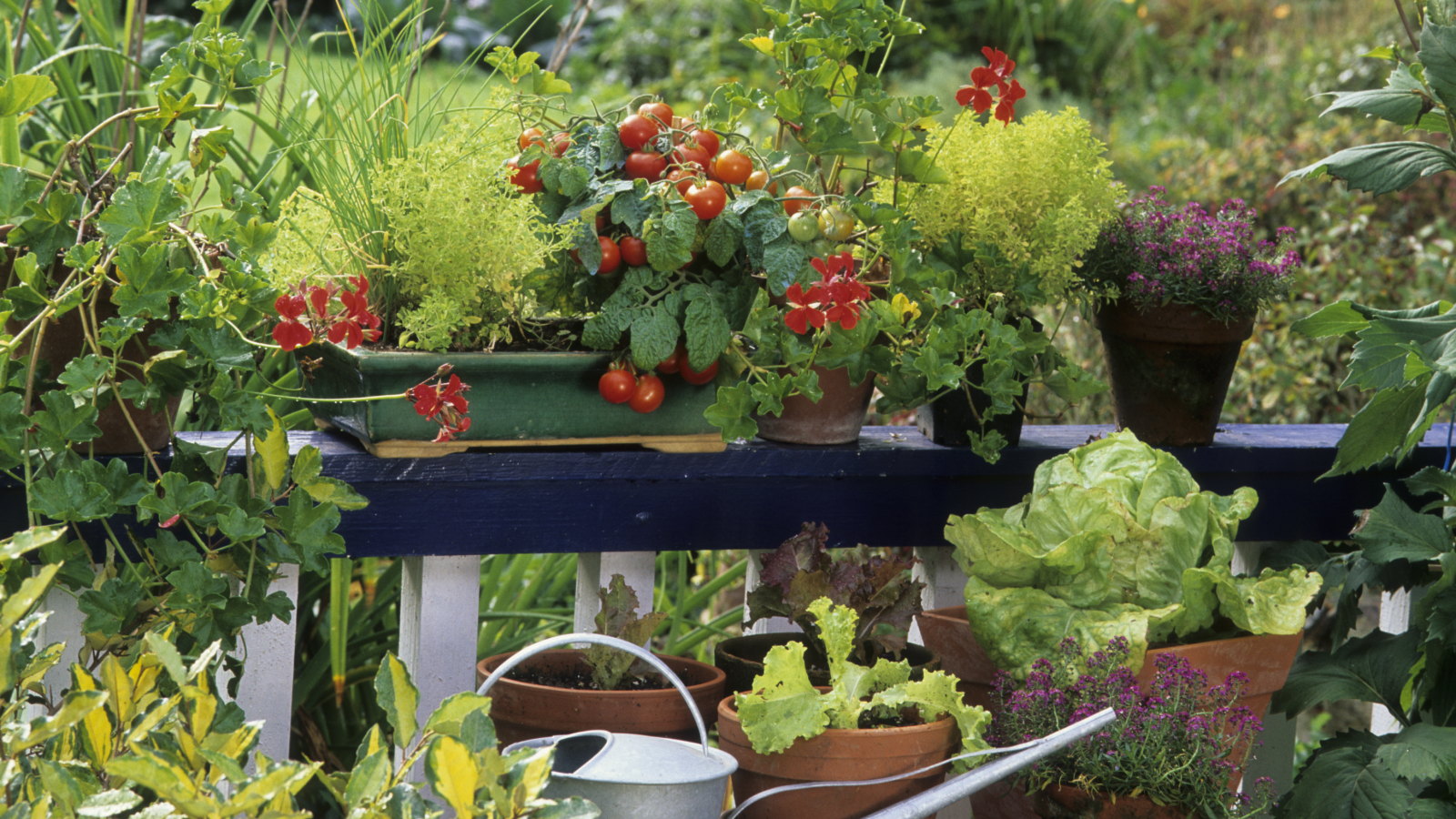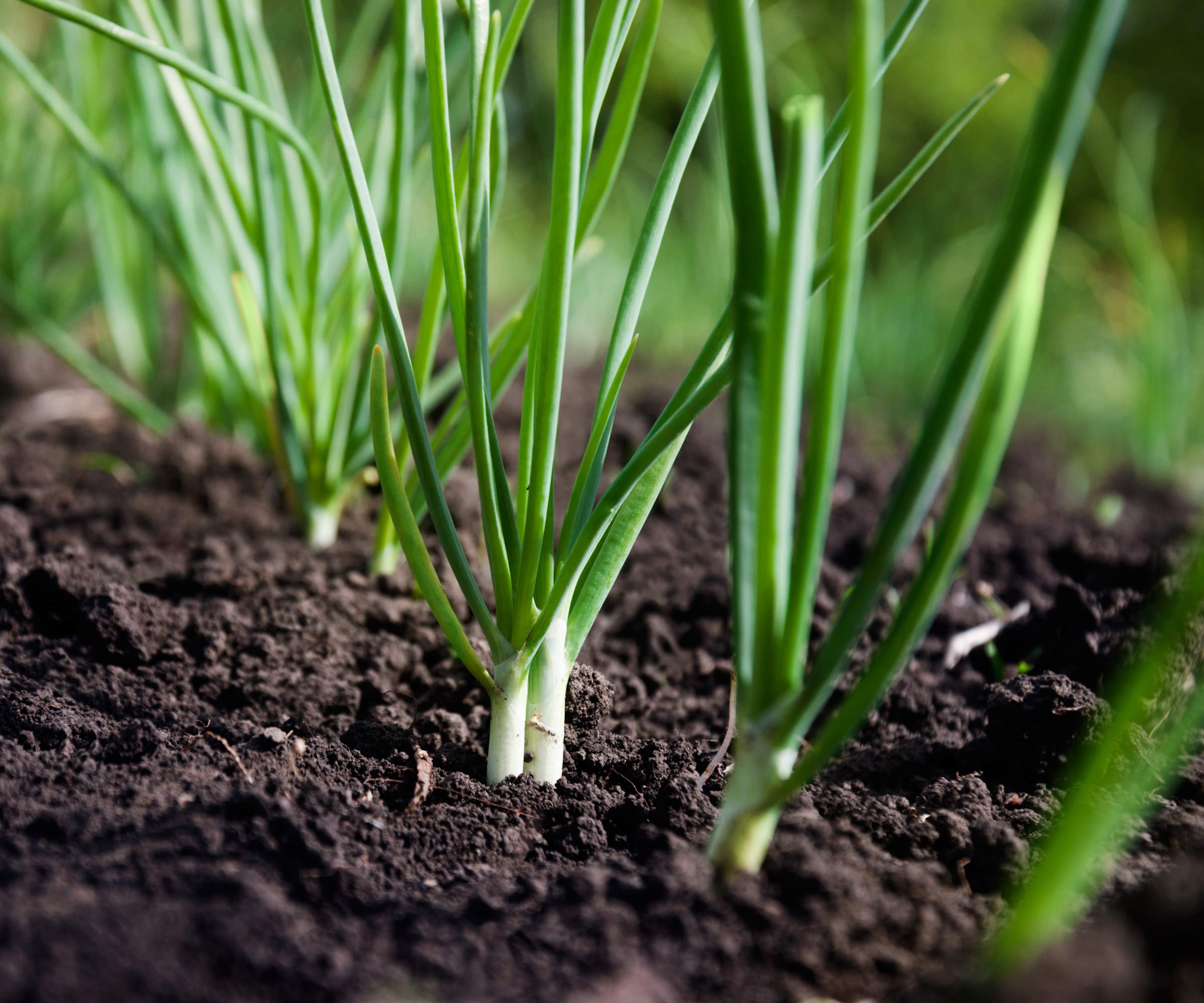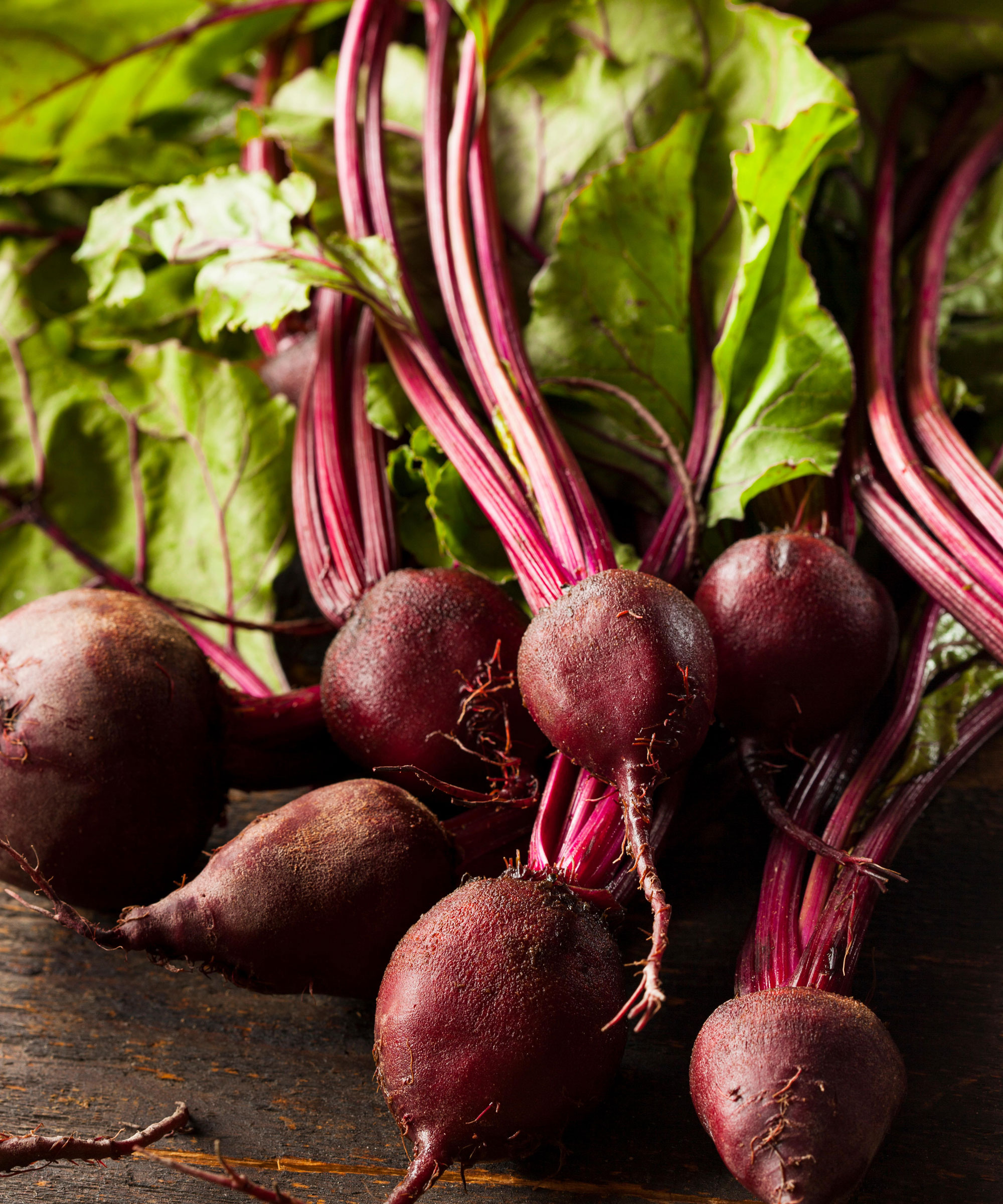I have grown crops for restaurants for years, and these are 7 vegetables to plant in containers in June for homegrown harvests in small spaces
Sow these for a wealth of homegrown vegetables in urban gardens – plus expert planting tips


Growing vegetables is a completely satisfying experience, and those homegrown crops will always surpass any bagged or plastic-wrapped produce you find in grocery stores. Even if you have a smaller garden or pots on a deck or balcony, you can still plant a wide variety of vegetables in containers this month.
I worked as a professional kitchen gardener growing vegetables in walled kitchen gardens for restaurants for many years. Plus, I have cultivated a range of crops in pots and raised beds in smaller urban gardens at home.
Admittedly, June is busy in any vegetable garden, with early crops to harvest, vegetables to sow, and lots of watering and weeding required. If you want to start or expand a vegetable container garden, I recommend planting these seven crops this month.

Vegetables to plant in June - 7 of the best for container gardens
Here I have picked some of the best vegetables to plant in June. These are all great vegetables to grow in pots, and I also provide expert sowing tips I have picked up from my many years of growing crops from seed in vegetable gardens.
Bok choy

Also known as pak choi, this Asian vegetable is a type of Chinese cabbage grown as a leafy crop. It comes in white or green varieties, and the leaves have a mild, peppery taste, making them ideal for adding texture and spice to salads or stir-fries.
You may be able to get bok choy plants this month to plant vegetables directly into your containers or raised beds. However, you can sow seeds outdoors this month for a budget-friendly way to get harvests of leaves.
Any container should be at least 10-12 inches wide and filled with high-quality potting soil. Sow the seeds directly onto the surface and cover with a thin layer of more soil. Place the container in a sunny spot, ideally with at least six hours of sunlight a day, and keep the soil moist.
Design expertise in your inbox – from inspiring decorating ideas and beautiful celebrity homes to practical gardening advice and shopping round-ups.
The crop can be harvested as soon as 30-40 days later for baby leaves, or left a bit longer to develop to maturity for picking when the leaves reach at least 12 inches. You can pick bok choy as a cut-and-come-again crop, or cut the entire head.
You can get bok choy 'white stem' seeds from True Leaf Market to sow this month.
Green onions

Green onions, spring onions, or scallions. These are three terms that tend to be used interchangeably for these recognizable types of onions that are harvested with thin stems and green tops. The difference is whether you harvest them once a small bulb has formed, or slightly before.
No matter which you grow or what you call them, these crops are fast-growing vegetables that can be ready to harvest around 60 days from sowing.
They can be sown into pots at least 18 inches wide in spring and summer. The width is more important than the depth, as green onions have shallow roots. A rectangular planter, such as this planter box at Amazon, makes an ideal trough for growing these tangy alliums.
Either make shallow drills and sprinkle seeds into them, or scatter them onto the surface of potting mix and cover with a half-inch of soil. Keep the soil moist, place the container in a sunny spot, and thin the seedlings to 1-2 inches apart when they germinate.
A classic fast-growing green onion I have always grown and found to be highly reliable is 'White Lisbon'. You can get 'White Lisbon' seeds at Burpee to sow into containers this month.
Zucchini

Growing zucchini is very simple, and the plants are so productive that the likelihood is you only need one to give you all the zucchini you want each summer.
If you want to grow zucchini in containers, compact-growing bush varieties are best-suited to pots. Any container wants to be large, ideally 5 to 10 gallons in size, to accommodate the vegetable’s sizable root system.
In June, you can get live zucchini plants to put into containers, or you can still direct sow seeds if you do so early in the month. Sow the seeds an inch deep into the soil, place the container somewhere warm and bright, and keep the soil moist for good germination.
Water the crops regularly throughout the summer, but don’t overwater plants as they risk rotting sitting in soggy soil and water the soil rather than the foliage to avoid fungal diseases.
Zucchini in pots will benefit from balanced fertilizer early in the season, plus a feed every two weeks with a tomato fertilizer (like this liquid tomato feed at Walmart) once it starts flowering, to help develop and ripen fruits.
See the range of zucchini seeds at Amazon
See the range of zucchini seeds at Walmart
See the range of zucchini seeds at Burpee
See the range of zucchini seeds at True Leaf Market
Bush cucumbers

Cucumbers may not be the first crop that comes to mind when you think of containers, however, bush cucumbers are smaller plants suited to pots.
They don’t grow the same long stems as vining cucumbers and, thus, don’t need a large vegetable garden trellis to support them. They are ideal for growing in pots, either spilling over the edges of the container or kept upright with a simple tomato cage.
To grow cucumbers in pots, pick a container at least five gallons in size and place it somewhere warm where they can enjoy lots of summer sun. Plants will need regular watering and feeding with a tomato feed or comfrey fertilizer every two weeks once they start flowering and fruiting.
You can plant cucumber seeds directly into containers this month, sowing three and thinning them to leave the strongest and healthiest seedlings once they germinate. The alternative is to grow cucumbers from store-bought plants, which will give you an earlier crop.
These 'Bush Champion' cucumber seeds at Burpee grow into compact, yet highly productive, plants that are ideal for containers or raised beds.
Chard

Chard is a great dual-purpose crop for any small vegetable garden. Not only does it look stunning, with its vividly colored stems making quite the ornamental display, but it is also an easy-to-grow, productive vegetable.
In particular, the 'Rainbox Mix' of Swiss Chard seeds, available at True Leaf Market, produces plants in shades of red, yellow, orange, white, and pink for a dramatic addition to any space.
If you want to grow Swiss chard this month, sow seeds directly into containers at least 12 inches wide. While plants will be available to plant Swiss chard directly into your pots, the crop is simple to grow from seed.
As the seeds are larger than other vegetable seeds, sow them individually into holes an inch deep and at least four inches apart. Alternatively, you can pop a couple in each hole, but be prepared to thin the seedlings as they develop.
Plant your container into a sunny spot, though chard can tolerate part-shade and may benefit from a bit of protection from the afternoon sun in warmer US hardiness zones. If all goes well, you should be able to harvest Swiss chard in 4-6 weeks as baby leaves, while mature leaves will be ready a few weeks later.
Radishes

Ideal for adding bite and spice to any summer salads, radishes are very easy and quick to grow. It can take as little as four weeks to grow radishes from sowing to harvesting, and you can get great crops from containers.
Radishes are always direct sown into their growing spot and can be sown successively from spring to early fall. To grow radishes in pots, pick a container at least 12 inches wide and six inches deep. Six inches is the minimum depth for shorter-rooted varieties, while longer-rooting types will need a container at least 12 inches deep.
Thinly sprinkle the seeds over the surface, covering with a half-inch of soil, and place the container in a sunny spot. Growers in warmer climates should give radishes protection from the afternoon sun to prevent bolting.
Keep the soil moist, thin seedlings to around two inches apart as required, and start to harvest radishes once they reach a usable size, which could be as little as 30 days from sowing the seeds.
Discover the range of radish seeds to plant at Amazon
Discover the range of radish seeds to plant at Walmart
Discover the range of radish seeds to plant at Burpee
Discover the range of radish seeds to plant at True Leaf Market
Beets

Beets come in different shapes and colors, and they can be eaten raw in salads, roasted, pickled, and more. No matter what type of beets you pick, they are all easy to grow and can be sown directly into containers this month.
Sow seeds onto the surface of compost and cover with an inch of soil. However, always sow thinly as beets are multi-germ and that means there are 2-5 seeds contained within the large seed you sow.
Sow too thickly when you plant beets, and you’ll have a lot of thinning ahead of you, as you want to give each beet around five inches of space. However, the good news is that the thinned seedlings can be added to salads.
Keep the container somewhere sunny and water it regularly. You can start to harvest beets once they reach the size of a golf ball, but don’t wait as they can develop a woody core when left too long.
See the range of beet seeds at Amazon
See the range of beet seeds at Walmart
See the range of beet seeds at Burpee
See the range of beet seeds at True Leaf Market
FAQs
Can I sow tomato seeds in June?
June is late to plant tomatoes; however, you can get a crop this year if you sow them early in the month. If you want to grow tomatoes in pots and haven’t got round to sowing seeds yet, consider this ‘Veranda Red Hybrid’ tomato from Burpee. A compact tomato variety that quickly grows to around a foot high and produces a bumper crop of cherry tomatoes.
Can you plant carrots in June?
Yes. You can sow carrots this month, and you can grow carrots in containers successfully by planting seeds in June. Short-rooted and rounded carrot varieties are best when you grow carrots in pots, as they require less soil to mature in. Traditional, longer-rooted carrots are only suited for containers at least 18 inches deep.
Can I plant potatoes in June?
You can plant potatoes in June, but some types are more suitable than others. In particular, early types of potatoes are best for planting this month, as they take 100 days to go from planting to harvesting. They are also ideal for growing potatoes in a container.
Above is a top selection of vegetables to plant in June that I recommend for a great range of harvests. However, when you do any direct sowing into pots this month, I also advise putting anti-slug measures in place.
Slugs and snails are notorious for nibbling young seedlings as they appear. So what can you do to get rid of slugs and keep your pots safe?
With pots in particular, you can put copper tape around them, which gives slugs a mild electric shock, or apply vaseline or petroleum jelly around the rims of the containers, as the slugs struggle on the slippery barrier.

Drew has worked as a writer since 2008 and was also a professional gardener for many years. As a trained horticulturist, he worked in prestigious historic gardens, including Hanbury Hall and the world-famous Hidcote Manor Garden. He also spent time as a specialist kitchen gardener at Soho Farmhouse and Netherby Hall, where he grew vegetables, fruit, herbs, and cut flowers for restaurants. Drew has written for numerous print and online publications and is an allotment holder and garden blogger. He is shortlisted for the Digital Gardening Writer of the Year at the 2025 Garden Media Guild Awards.